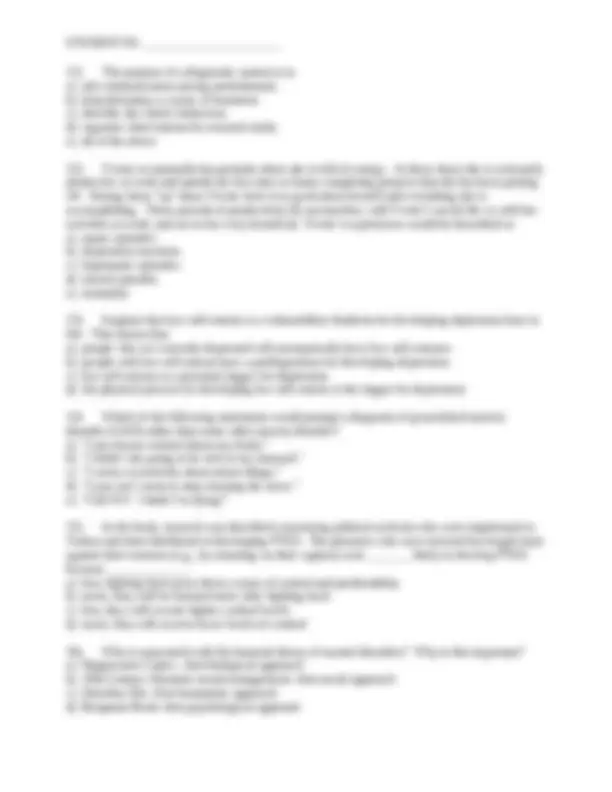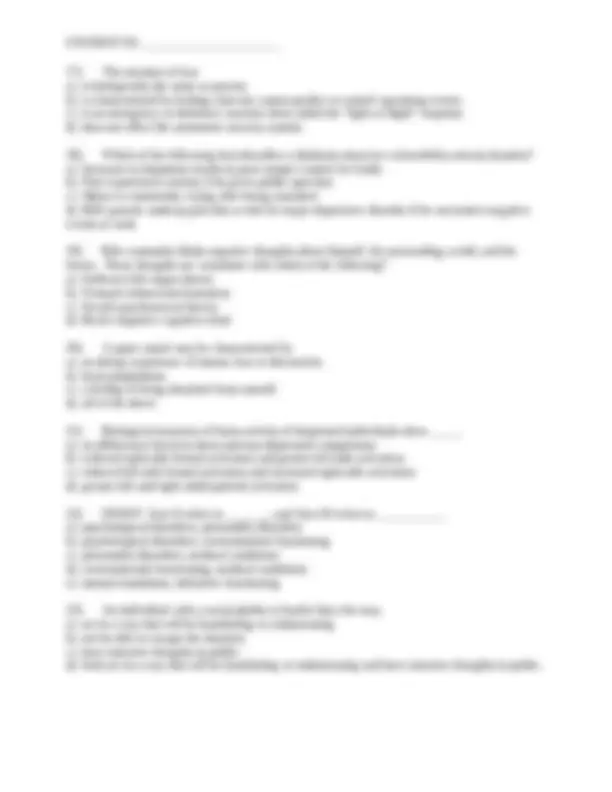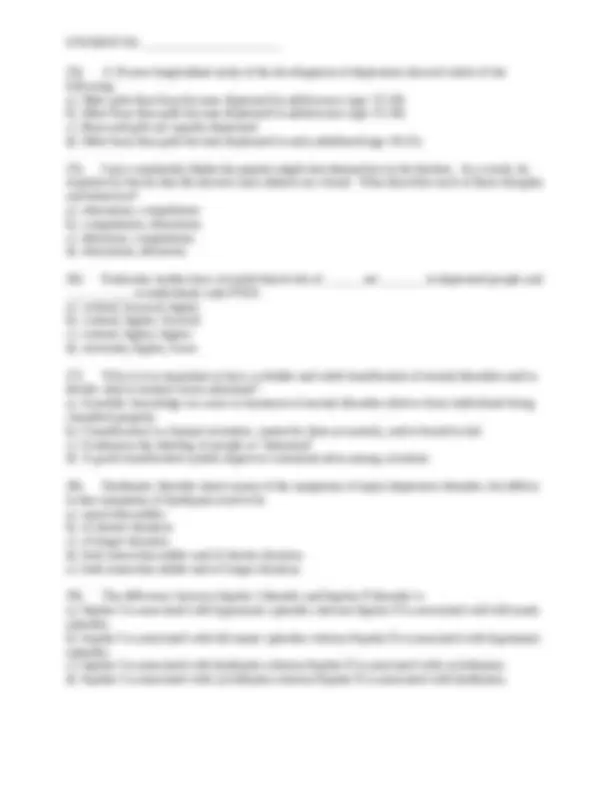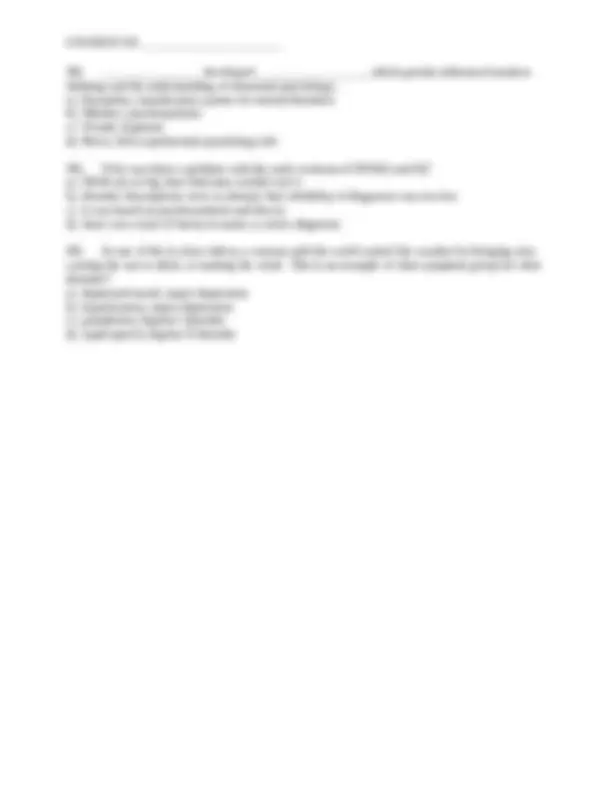STUDENT ID: _______________________
Exam 1--Abnormal Psychology 2500
Dr. Hankin. Fall 2009
Form A.
You will have the entire class period to complete this exam. Write your student ID on this exam
booklet. Good luck!
1) A student taking a psychology class hears about anxiety disorders and wonders if she has a
mental disorder because she becomes anxious and worries before taking an exam. She realizes that
she worries less than her friend, Linda, but more than Bob. She can perform fine when taking the
exam, and typically gets good grades. This illustrates which of the following approaches to
distinguishing normal from abnormal:
a) Dimensional approach
b) categorical approach
c) prototypical approach
d) integrated approach
2) According to Jerome Wakefield, what is harmful dysfunction? Also, what is the central
limitation to his definition?
a) harmful dysfunction--breakdown in cognitive, emotional, and behavioral functioning
mechanisms as they are supposed to work. Problem: scientists haven't been able to precisely
identify defectively operating mechanisms, so they can't determine how or when the mechanisms
break down.
b) harmful dysfunction--breakdown in cognitive, emotional, and behavioral functioning
mechanisms as they are supposed to work. Problem: scientists think that biological functioning
breakdown is the most important.
c) harmful dysfunction--psychological dysfunction within an individual that is associated with
distress or impairment in functioning and a response that is not typical or culturally expected.
Problem: scientists can't determine what is culturally expected.
d) harmful dysfunction--psychological dysfunction within an individual that is associated with
distress or impairment in functioning and a response that is not typical or culturally expected.
Problem: no problems with this definition; it is the best available.
3) What is the primary distinction between DSM-IV axis I and axis II disorders?
a) Clinical disorders go on axis I; personality disorders and mental retardation go on axis II.
b) Clinical disorders and mental retardation go on Axis I; personality disorders go on axis II.
c) Personality disorders and defense mechanisms go on axis I.
d) Clinical disorders and health problems go on Axis I; personality disorders and mental
retardation go on axis II.
4) The criterion that distinguishes a pathological worry process from the normal kind of
worrying that all of us do from time to time is that, in the pathological worry process:
a) an individual experiences physiological symptoms.
b) there is a different set of external cues.
c) the individual finds it very difficult to turn off or control the worry process.
d) none of the above
















